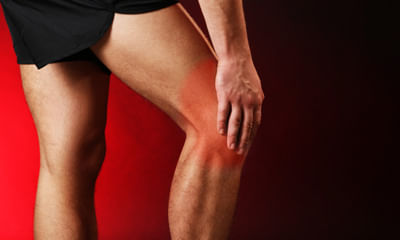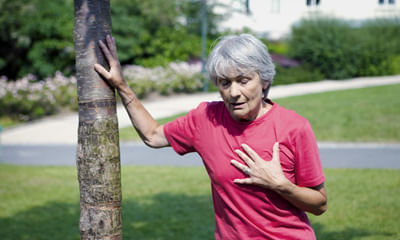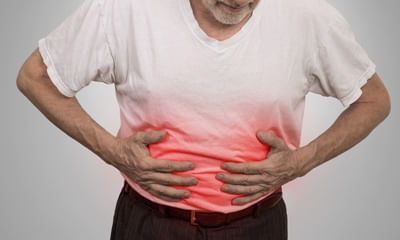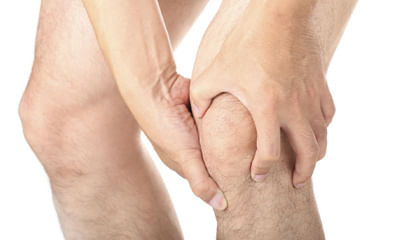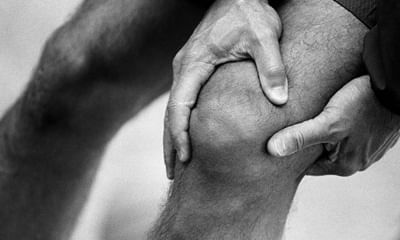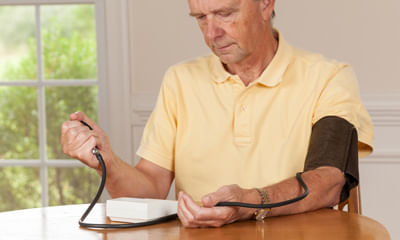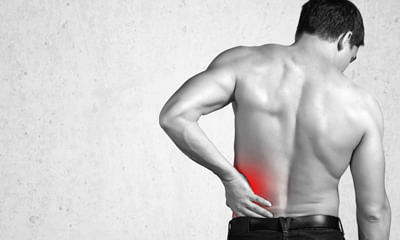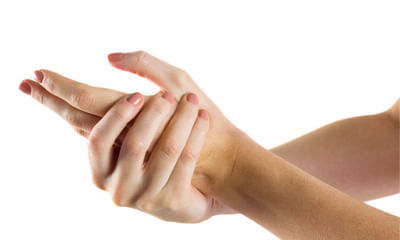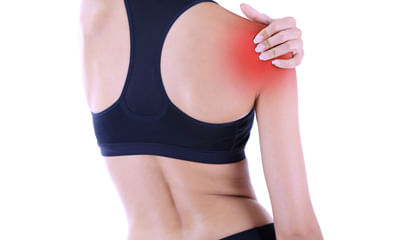Ear Pain And Chest Pain At The Same Time
Sir I am 27 year old male I have symptoms of left shoulder and wrist pain while walking so I went to doctor doctor do fo ...
Ask Free Question
It looks like cervical pain that's the reason you have pain in the shoulder and along side until wrist. You need to take rest and you need to consult physiotherapist you need to do intermittent cervical traction and also inferential therapy treatment which will help you to get subsided with pain. Neck pain cervical spondylosis– chronic condition with radiating pain this is cervical pain (neck pain) and that's the reason the pain radiates until the shoulder blades. If you keep ice that would help and along side you can do hot water fermentation. You shall use cervical collar which would help you to reduce the radiating pain ie. Due to the nerve compression. You have to go for traction and also you can do ift. Please consult the near bytherapist for quick relief. Use collar will definitely be helpful for him to maintain the good posture. And also cervical pillow can be used which might make you to have better posture of the shoulder neck and arm. Neck tilt: from the sitting position, tilt your head down so your chin touches your chest. Hold this position for 5 second s. Return to the starting position and repeat. Do this five times. Side-to-side neck tilt. From the same starting position, tilt you neck toward one shoulder, leading with your ear. Hold for 5 seconds and then return to the starting position. Do this five times on each side. Neck turn. Look straight ahead, then turn your head to one side, keeping your chin at the same level. Do this five times on each side. Neck stretch. Holding the rest of your body straight, push your chin forward, stretching your throat. Hold for 5 seconds. From the same starting position, push your chin backward and hold for 5 seconds. Do the forward and backward stretch five times each. If any of these exercises cause severe pain or weakness in your hands or arms, stop right away and talk with your doctor. We suggest you to wear cervical collar which will help you to improve the cervical angle and also it definitely helps you to improve the neck posture due to which your neck pain is triggered more. The importance of wearing cervical collar is to give good stability to the neck and also it definitely prevents you to have excess neck movements which makes the condition worse. If you wear cervical collar you cannot turn your neck as you like which itself will help you to have better functioning of the cervical spine. This cervical soft collar what we are suggesting for you is available at our clinic. If you want you can buy from us, if you are far away from chennai we can send you by courier. The reason why we are conveying you to buy from us is we can demonstrate over the videocall (using whatsapp) and also we can monitor you throughout when to wear it and how long to wear it. And also if you find any difficulty wearing the brace you can also revert back to us for few more suggestions and we can propose you good solution how to go about it. Pushups this one may seem basic, but there’s no denying that pushups are one of the best ways to strengthen the pectoral muscles. These can be done on the knees or toes. If you’re not ready for full pushups, start with your hands resting on a solid surface higher than your feet — like a very sturdy coffee table or the edge of a couch, cushions removed, that’s pressed up against a wall — and start on the toes. Having your hands higher than your feet and your body at an angle can be a good way to start a pushup regimen. As you get stronger, you can begin to lower the angle of your body. This will help you transition to full pushups more easily than going from knees to toes. A full plank engages the muscles differently, even at an angle. When doing pushups, aim for 2 sets of 10 reps per day. 1.start in plank position with your hands under your shoulders and your core engaged. 2.as you lower, inhale. 3.as you engage your muscles to push yourself up, exhale. Keep your elbows hugging in close to your body. Keep your focus on slowly breathing as you do these, and on engaging the pectorals while keeping the core tight. Don’t just crank these out to get them done — this can compromise your form and do more harm than good. If the movement is really tough, break the sets into three or five to start, or find a higher point to begin after a week of exercise. If necessary, you can even stand and do pushups pushing against a wall. Chest fly for this exercise, you’ll need a bench or exercise ball as well as some dumbbells. If you don’t have weights, you can always use the old standby: a soup can in each hand. Just keep in mind that dumbbells are easier to hold and you can get more out of using them, as even 5-pound weights are heavier than your heaviest canned goods. 1.lie with your upper and middle back on a bench or ball, with your legs at a 90-degree angle. Hold a weight in each hand and extend your arms to the sky, elbows slightly bent. 2.as you inhale, lower your arms out wide, until your elbows are at shoulder height. 3.as you exhale, raise your hands until they meet above your chest again. 4.do 2 sets of 10. If that feels pretty easy, up it to 2 sets of 15 or increase the weight you’re using. Dumbbell row strengthening your back muscles is an important component of treating pectusexcavatum. The dumbbell row targets your lat muscles. The way it’s described below also strengthens your core, another important component of treating the condition. You’ll need some dumbbells to complete this move — err on the lighter side if you’ve never done a row before. 1.hold one dumbbell in each hand with your arms extended. Hinge at the hips until your upper body reaches a 45-degree angle. 2.keeping your neck in line with your spine and your gaze straight down, pull your elbows straight back and squeeze between your shoulder blades. 3.extend your arms back to the starting position. Complete 2 sets of 10. Dumbbell rear delt fly another move to strengthen your back, a dumbbell rear delt fly also focuses on the lats, as well as the rhomboids and the traps. Choose a light pair of dumbbells to complete this move and ensure that you’re pinching your shoulder blades together at the top to get the most out of it. 1.hold one dumbbell in each hand with your arms extended. Hinge at the hips until your upper body reaches a 45-degree angle and bring the dumbbells together. 2.keeping your spine and neck neutral, inhale and push the dumbbells out and up to the side until your arms are parallel to the floor. 3.exhale and return to the start in a slow and controlled motion. Complete 2 sets of 10. Exercise is a key component to treating pectusexcavatum. By strengthening your chest, back, and core muscles and stretching your chest cavity, you can combat the condition’s effects. Aim to complete these exercises several times a week to maximize results. Anterior pelvic tilt 1.lie on the back with the knees bent and feet flat on the floor, hip-width apart. 2.squeeze the buttocks and tilt the pelvis upward. 3.the back should feel as though it is flattening to the ground. 4.return to normal pelvis position. 5.repeat 10–12 times.
Hello i'm b mukherjee. Age 29 yrs. I've esophagus motility disorder. I felt severe pain and burning sensation left side ...
Ask Free Question
I understand the complexity of your symptoms associated with esophagus motility disorder and functional heartburn. It's crucial to approach your condition comprehensively, considering your desire for pregnancy, here are few things to consider: medication management: esomeprazole 40 mg / esogress is a proton pump inhibitor (ppi) used to manage acid reflux. Its efficacy can vary among individuals. It's vital to adhere to the prescribed dosage and discuss any recurring symptoms with your healthcare provider. Lifestyle modifications: implement lifestyle changes to minimize acid reflux triggers. This includes avoiding large meals, acidic or spicy foods, and lying down after eating. Elevating the head of your bed can assist in reducing nighttime reflux. Dietary adjustments: collaborate with a dietitian to identify specific trigger foods and customize your diet accordingly. This can significantly impact the frequency and intensity of acid reflux and associated symptoms. Continuous monitoring: maintain a detailed symptom diary to track patterns, triggers, and medication effectiveness. Regularly share this information with your healthcare provider for informed decision-making. Pregnancy planning: it's commendable that you're considering pregnancy. Discuss your plans with your obs/gynaec doctor to explore acid reflux management strategies that are safe during pregnancy. They may recommend alternative medications or lifestyle modifications. Nasal and throat symptoms: mucus accumulation in the throat and nose can be associated with acid reflux. Ensuring proper acid suppression is crucial. Additionally, consider nasal saline irrigation to alleviate nasal congestion and mucus buildup. Ear, nose, and throat (ent) assessment: given the pressure and symptoms in your throat, nose, and ear, consider consulting an ent specialist for a comprehensive evaluation. They can assess for any structural or inflammatory issues contributing to your symptoms. Alternative medications or therapies: if esomeprazole alone is insufficient, your healthcare provider may explore alternative medications or therapies. This could include combining medications or trying different acid-suppressing drugs. Remember, managing acid reflux is a nuanced process, and individual responses to treatments vary. Regular follow-ups with your healthcare provider are essential to assess progress and adjust your treatment plan accordingly. If you have specific concerns or require further tailored advice, feel free to initiate a private consultation. Your well-being is paramount, and i'm here to support you on your health journey.
Sir, I am 43 years male. I have gastrointestinal problem since 15 yrs, I did my endoscopy colonoscopy small bowel biopsy ...
Ask Free Question
Hi dear friend. I noted down your history and complaints. As you said you have gastric issues and your hpylori is positive you should take treatment for that first before going towards homeopathy. As per my own knowledge homeopathy takes much time to show its affect on the problem. My suggestion would be to take allopathy treatment first and be symptom free and then opt for homeopathy. Thanks and regards.
I have little knee pain after doing squat exercise. Earlier I only feel little knee pain while doing squat. But on 1st s ...
Ask Free Question
Resisted terminal knee extension: make a loop with a piece of elastic tubing by tying a knot in both ends. Close the knot in a door at knee height. Step into the loop with your injured leg so the tubing is around the back of your knee. Lift the other foot off the ground and hold onto a chair for balance, if needed. Bend the knee with tubing about 45 degrees. Slowly straighten your leg, keeping your thigh muscle tight as you do this. Repeat 15 times. Do 2 sets of 15. If you need an easier way to do this, stand on both legs for better support while you do the exercise. Standing calf stretch: stand facing a wall with your hands on the wall at about eye level. Keep as arthritis is very common that you get generally bilaterally. Ice therapy would definitely help to reduce the inflammation. We also advise you to use knee cap which would help to prevent the knee from damaging further and also to maintain the importance of buying braces and splints from us – orthopaedic support braces we suggest you to wear knee brace which is available at our clinic. If you want you can buy from us, if you are far away from chennai we can send you by courier. The reason why we are conveying you to buy from us is we can demonstrate over the videocall (using whatsapp) and also we can monitor you throughout when to wear it and how long to wear it. And also if you find any difficulty wearing the brace you can also revert back to us for few more suggestions and we can propose you good solution how to go about it. Resisted terminal knee extension: make a loop with a piece of elastic tubing by tying a knot in both ends. Close the knot in a door at knee height. Step into the loop with your injured leg so the tubing is around the back of your knee. Lift the other foot off the ground and hold onto a chair for balance, if needed. Bend the knee with tubing about 45 degrees. Slowly straighten your leg, keeping your thigh muscle tight as you do this. Repeat 15 times. Do 2 sets of 15. If you need an easier way to do this, stand on both legs for better support while you do the exercise. Standing calf stretch: stand facing a wall with your hands on the wall at about eye level. Keep as arthritis is very common that you get generally bilaterally. Ice therapy would definitely help to reduce the inflammation. We also advise you to use knee cap which would help to prevent the knee from damaging further and also to maintain the quadriceps muscle tone 1. Heel and calf stretch 2. Quadriceps stretch to do this stretch: 1. Stand next to a wall or use a chair for support. Your feet should be shoulder-width apart. 2. Bend one knee so your foot goes up toward your glutes. 3. Grab your ankle and gently pull it toward your glutes as far as you can comfortably. 4. Hold for 30 seconds. 5. Return to the starting position and change legs. 6. Repeat 2 times on each side. Ice therapy would definitely help to reduce the inflammation. We also advise you to use knee cap which would help to prevent the knee from damaging further and also to maintain the quadriceps muscle tone. Stiffness have developed due to weakness of the ligaments &inflammed cartilage. Specific knee exercises will also help ie. Keeping ball underneath the knee and keep pressing it. That's the simple exercise which will help you to strengthen the knee this must be due to your muscular strain and posture and it may not be due to any other reasons. It is better to correct your addictive behaviour by consulting the right physician. For the time being for the back pain, apply ice. Neck tilt: from the sitting position, tilt your head down so your chin touches your chest. Hold this position for 5 second s. Return to the starting position and repeat. Do this five times. Side-to-side neck tilt. From the same starting position, tilt you neck toward one shoulder, leading with your ear. Hold for 5 seconds and then return to the starting position. Do this five times on each side. Neck turn. Look straight ahead, then turn your head to one side, keeping your chin at the same level. Do this five times on each side. Neck stretch. Holding the rest of your body straight, push your chin forward, stretching your throat. Hold for 5 seconds. From the same starting position, push your chin backward and hold for 5 seconds. Do the forward and backward stretch five times each. If any of these exercises cause severe pain or weakness in your hands or arms, stop right away and talk with your doctor this is a general knee pain and for this you can follow these measures: one keep a pillow right under the knee while sleeping, next is you can keep ice in the painful area for about 5--10 minutes, it looks like you are is important to check that. Anaemia always leads to the symptoms of being tired and also having body pain though there may not be any pathological reasons for knee pain. With knee exercises you will definitely feel better and muscles must be strengthened.
I have little knee pain after doing squat exercise. Earlier I only feel little knee pain while doing squat. But on 1st s ...
Ask Free Question
Resisted terminal knee extension: make a loop with a piece of elastic tubing by tying a knot in both ends. Close the knot in a door at knee height. Step into the loop with your injured leg so the tubing is around the back of your knee. Lift the other foot off the ground and hold onto a chair for balance, if needed. Bend the knee with tubing about 45 degrees. Slowly straighten your leg, keeping your thigh muscle tight as you do this. Repeat 15 times. Do 2 sets of 15. If you need an easier way to do this, stand on both legs for better support while you do the exercise. Standing calf stretch: stand facing a wall with your hands on the wall at about eye level. Keep as arthritis is very common that you get generally bilaterally. Ice therapy would definitely help to reduce the inflammation. We also advise you to use knee cap which would help to prevent the knee from damaging further and also to maintain the importance of buying braces and splints from us – orthopaedic support braces we suggest you to wear knee brace which is available at our clinic. If you want you can buy from us, if you are far away from chennai we can send you by courier. The reason why we are conveying you to buy from us is we can demonstrate over the videocall (using whatsapp) and also we can monitor you throughout when to wear it and how long to wear it. And also if you find any difficulty wearing the brace you can also revert back to us for few more suggestions and we can propose you good solution how to go about it. Resisted terminal knee extension: make a loop with a piece of elastic tubing by tying a knot in both ends. Close the knot in a door at knee height. Step into the loop with your injured leg so the tubing is around the back of your knee. Lift the other foot off the ground and hold onto a chair for balance, if needed. Bend the knee with tubing about 45 degrees. Slowly straighten your leg, keeping your thigh muscle tight as you do this. Repeat 15 times. Do 2 sets of 15. If you need an easier way to do this, stand on both legs for better support while you do the exercise. Standing calf stretch: stand facing a wall with your hands on the wall at about eye level. Keep as arthritis is very common that you get generally bilaterally. Ice therapy would definitely help to reduce the inflammation. We also advise you to use knee cap which would help to prevent the knee from damaging further and also to maintain the quadriceps muscle tone 1. Heel and calf stretch 2. Quadriceps stretch to do this stretch: 1. Stand next to a wall or use a chair for support. Your feet should be shoulder-width apart. 2. Bend one knee so your foot goes up toward your glutes. 3. Grab your ankle and gently pull it toward your glutes as far as you can comfortably. 4. Hold for 30 seconds. 5. Return to the starting position and change legs. 6. Repeat 2 times on each side. Ice therapy would definitely help to reduce the inflammation. We also advise you to use knee cap which would help to prevent the knee from damaging further and also to maintain the quadriceps muscle tone. Stiffness have developed due to weakness of the ligaments &inflammed cartilage. Specific knee exercises will also help ie. Keeping ball underneath the knee and keep pressing it. That's the simple exercise which will help you to strengthen the knee this must be due to your muscular strain and posture and it may not be due to any other reasons. It is better to correct your addictive behaviour by consulting the right physician. For the time being for the back pain, apply ice.Neck tilt: from the sitting position, tilt your head down so your chin touches your chest. Hold this position for 5 second s. Return to the starting position and repeat. Do this five times. Side-to-side neck tilt. From the same starting position, tilt you neck toward one shoulder, leading with your ear. Hold for 5 seconds and then return to the starting position. Do this five times on each side. Neck turn. Look straight ahead, then turn your head to one side, keeping your chin at the same level. Do this five times on each side. Neck stretch. Holding the rest of your body straight, push your chin forward, stretching your throat. Hold for 5 seconds. From the same starting position, push your chin backward and hold for 5 seconds. Do the forward and backward stretch five times each. If any of these exercises cause severe pain or weakness in your hands or arms, stop right away and talk with your doctor this is a general knee pain and for this you can follow these measures: one keep a pillow right under the knee while sleeping, next is you can keep ice in the painful area for about 5--10 minutes, it looks like you are is important to check that. Anaemia always leads to the symptoms of being tired and also having body pain though there may not be any pathological reasons for knee pain. With knee exercises you will definitely feel better and muscles must be strengthened.
Hi, I am taking high bp medicines from last dec when my bp was 150/110. I reduced my weight by 20 kg and eating normal f ...
Ask Free Question
Firstly, congratulations on the significant weight loss and the improvement in your blood pressure control. It's excellent that your blood pressure is within a healthier range. The pain you describe in the left hand near the elbow and in the shoulder, especially during brisk walking, could be due to various reasons. However, it's essential to take any chest pain or discomfort seriously and consult with your healthcare provider promptly. Given that you've experienced this pain during physical activity and you have a history of high blood pressure, it's crucial to rule out any cardiovascular concerns. Your normal echocardiogram is a positive indicator, but the pain you describe should be evaluated further. Here are a few considerations: 1. Musculoskeletal causes: pain in the left arm and shoulder could be musculoskeletal in nature, related to strain or overuse during exercise. 2. Cardiovascular causes: while your echo is normal, it's still important to consider other cardiovascular factors. Pain in the left arm can sometimes be associated with reduced blood flow. 3. Nerve impingement: nerve impingement or compression can also cause pain in the arm and shoulder. Since your symptoms have a potential cardiovascular connection, it's advisable to consult with your healthcare provider. They may recommend further cardiovascular evaluations, such as a stress test or additional imaging, to assess the heart's response to exercise. Don't ignore any unusual symptoms, especially during physical activity. It's better to be cautious and have a healthcare professional evaluate your situation. Consider scheduling a private text consult within the app to discuss your symptoms in more detail and receive personalized advice based on your health history.
Hello doctor! hope everyone is fine. Doctor i'm facing an issue of pain in my backbone, wrist and right leg. I didn't un ...
Ask Free Question
The pain may be due to sciatic nerve compression this simple stretch helps relieve sciatica pain by loosening your gluteal and piriformis muscles, which can become inflamed and press against the sciatic nerve. 1.lie on your back with your legs extended and your feet flexed upward. 2.bend your right leg and clasp your hands around the knee. 3.gently pull your right leg ac 4.5.6.7.ross your body toward your left shoulder. Hold it there for 30 seconds. Remember to pull your knee only as far as it will comfortably go. You should feel a relieving stretch in your muscle, not pain. 8.push your knee so your leg returns to its starting position. 9.repeat for a total of 3 reps, and then switch legs. 5.sitting spinal stretch sciatica pain is triggered when vertebrae in the spine compress. This stretch helps create space in the spine to relieve pressure on the sciatic nerve. 1.sit on the ground with your legs extended straight out with your feet flexed upward. 2.bend your right knee and place your foot flat on the floor on the outside of your opposite knee. 3.place your left elbow on the outside of your right knee to help you gently turn your body toward the right. 4.hold for 30 seconds and repeat three times, then switch sides. 6. Standing hamstring stretch this stretch can help ease pain and tightness in the hamstring caused by sciatica. 1.place your right foot on an elevated surface at or below your hip level. This could be a chair, ottoman, or step on a staircase. Flex your foot so your toes and leg are straight. If your knee tends to hyperextend, keep a slight bend in it. 2.bend your body forward slightly toward your foot. The further you go, the deeper the stretch. Do not push so far that you feel pain. 3.release the hip of your raised leg downward as opposed to lifting it up. If you need help easing your hip down, loop a yoga strap or long exercise band over your right thigh and under your left foot. 4.hold for at least 30 seconds, and then repeat on the other sideif you have low back pain and sciatica you can undergo intermittent pelvic traction where in your half of your body weight will be added in the electronic traction so that that would help you to reduce the pain, along with interferential therapy stimulations which would help you to get relieved from the radiating pain. Apply ice for the pain to get subsided immediately. If you cannot go immediately for the physiotherapy treatment. Ice can be kept in the low back where you have back pain. It is suggestible to wear lumbo sacral belt which would help you to build the abdominal muscle tone which itself would make you feel better. You can also wear mcr chappals which would help you to have less weight falling in the painful back. U have to take vitamin d rich foods. Likemilk, cheese, yogurt, brocoli, spinach. U need calcium consumption for increase the bone density. Lackof bone and bones crush inside the body vitamin d intake via supplements or exposure to low levels of sunlight. Vitamin d is used to absorb calcium in the bone and regulate calcium in the blood.this might be due to low calcium or vitamin d which has more impact on the bone density and also it makes one to feel that there is lack of bone strength or in a way the bones are brittle and almost breaking and they feel it is crushed in a way there are many bones breaking at the same time. You have to take vitamin d rich foods. Likemilk, cheese, yogurt, brocoli, spinach. U need calcium consumption for increase the bone density.
I am suffering from my weight gain issue. My cholesterol level is high and a bad chest pain so how can I loss my weight. ...
Ask Free Question
Hello lybrate-user, first of all, we should not target fast weight loss. It took time to gain, it will take time to loose. Weight gain can be handled by few major steps: 1. Balanced diet: in a day take 25% cereals (rice/ roti/ idli/poha etc.) + 25% protein rice foods (dairy/ dals/ nuts/ non-veg etc.) + 40% vegetables- prepared and salads + 10% fruits. Make sure to take small and frequent meals. 2. Drink adequate water, keep sipping throughout the day. Drinking 1 glass per hour is not a great idea. 3. Sleep and take meals on proper time. Time plays important role in digestion and absorption of food, even impacts weight through hormonal cycles. 4. Regular activity is a must. Do what ever you like, whenever you have time. Just keep 2 hour gap after breakfast, lunch or dinner. You can play games like badminton, do yoga, dance, walk and jog, join classes like judo karate etc. Anything that suits you. 5. Start small, do not create huge goals from day one, example do 5 min exercise in first week. Make it 10 min next week etc. 6. Work on stress management. Do certain activites which you like. Example listen to music while doing mindless work. This should help, you can also visit our blog url/obesity-scientific-approach/
The area in between my elbow and shoulder (upper arm) pains when I play badminton, however when I am at rest or at home ...
Ask Free Question
It may be rotator cuff injury keep ice after pain gets subsided do these exercise standing rows stand facing anchor with resistance band at elbow height. Step back until your arms are straight and the band has mild tension. Stand tall, bringing shoulders down and back and engage abdominal muscles (do not hunch shoulders or push out ribs). Draw elbows back while squeezing shoulder blades together behind you. You should feel the muscles between your shoulder blades activate and your chest open up. This strengthens the scapular muscles that for improved posture and scapular positioning. Perform 2 sets of 10. Dynamic t and I lay face down with arms out to sides like the letter “t.” while drawing belly in and maintaining neutral spine, lift arms up to sides while maintaining “t” position by engaging muscles between shoulder blades. Gently lower arms until they are down by your side, creating the letter “i.” return to “t” and repeat this movement. Do not arch lower back or lift head up. Perform 2 sets of 10. Bilateral external rotation stand tall with shoulders down and back drawing belly in towards spine. With elbows at 90-degrees and resistance band in hands, gently open arms out to sides against resistance. Don’t let shoulders tilt forward — keep them down and back. This strengthens the rotator cuff muscles. Repeat 2 sets of 10 repetitions. Modified plank with protraction begin in a modified plank position resting on forearms. While maintaining neutral spine (draw belly up towards spine for transverse abdominus muscle engagement), activate serratus anterior by pushing through forearms, allowing shoulder blades to separate farther apart. Return to starting position. Perform 10 reps holding 3 seconds each time you push arms away. Pec stretch, w, and snow angel on foam roller t, w, and snow angel: position yourself on foam roller with both head and tailbone supported. For t: open arms out to sides and allow gravity to create stretch. Do not force arms down to ground if they do not touch. For w: bend both elbows and lower arms until arms hang at side. For snow angel: begin with arms down by your side. Gently move arms out sideside and overhead like you are creating a snow angel, and return to start. Hold t/w about 20 seconds. Do not perform snow angel if you have with this movement.
I have a pain in the area between my elbow and shoulder ,however it only pains when I play badminton, when i'm at rest o ...
Ask Free Question
It may be rotator cuff injury keep ice after pain gets subsided do these exercise standing rows stand facing anchor with resistance band at elbow height. Step back until your arms are straight and the band has mild tension. Stand tall, bringing shoulders down and back and engage abdominal muscles (do not hunch shoulders or push out ribs). Draw elbows back while squeezing shoulder blades together behind you. You should feel the muscles between your shoulder blades activate and your chest open up. This strengthens the scapular muscles that for improved posture and scapular positioning. Perform 2 sets of 10. Dynamic t and I lay face down with arms out to sides like the letter “t.” while drawing belly in and maintaining neutral spine, lift arms up to sides while maintaining “t” position by engaging muscles between shoulder blades. Gently lower arms until they are down by your side, creating the letter “i.” return to “t” and repeat this movement. Do not arch lower back or lift head up. Perform 2 sets of 10. Bilateral external rotation stand tall with shoulders down and back drawing belly in towards spine. With elbows at 90-degrees and resistance band in hands, gently open arms out to sides against resistance. Don’t let shoulders tilt forward — keep them down and back. This strengthens the rotator cuff muscles. Repeat 2 sets of 10 repetitions. Modified plank with protraction begin in a modified plank position resting on forearms. While maintaining neutral spine (draw belly up towards spine for transverse abdominus muscle engagement), activate serratus anterior by pushing through forearms, allowing shoulder blades to separate farther apart. Return to starting position. Perform 10 reps holding 3 seconds each time you push arms away. Pec stretch, w, and snow angel on foam roller t, w, and snow angel: position yourself on foam roller with both head and tailbone supported. For t: open arms out to sides and allow gravity to create stretch. Do not force arms down to ground if they do not touch. For w: bend both elbows and lower arms until arms hang at side. For snow angel: begin with arms down by your side. Gently move arms out sideside and overhead like you are creating a snow angel, and return to start. Hold t/w about 20 seconds. Do not perform snow angel if you have with this movement.

